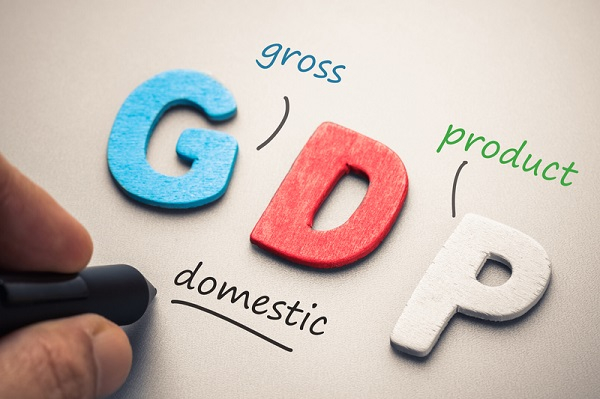

The IMF crisis of December 1997 is still fresh in the minds of the Korean population. This came as a blow for South Korea as it has been a prospering economy and had not seen any major recession in at least the fifteen years preceding the IMF crisis. The root cause was the structural problems in the financial and corporate sectors. The issues started surfacing in South Korea in the second half of 1997 when the capital inflows reversed as foreign investors began reducing their exposure to South Korea.

On 13th August 1955, South Korea joined the IMF. The initial relations between the two were steady, and the country contributed roughly $8.582 billion in Special Drawing Rights to the IMF quota. This comprises 1.81 per cent of the total funds of the IMF. Presently, there are 87,292 votes reserved for South Korea in IMF and this is about 1.73 per cent of the total.
International Monetary Fund continued its partnership with South Korea in 2019 in support of capacity development. Recently, a team from IMF went to Seoul to deliberately discuss the fiscal policy of South Korea to assist growth in the short as well as medium term.
Following the Korean War (1953), the economy of South Korea sustained growth for a long period. South Korea emerged as one of the last countries to be affected by the Asian Financial Crisis.  The value of the South Korean currency, the won, dropped, creating a large investment panic in the country. This ultimately resulted in the bankruptcies of chaebols. Chaebols had borrowed huge amounts owing personal projects.
The value of the South Korean currency, the won, dropped, creating a large investment panic in the country. This ultimately resulted in the bankruptcies of chaebols. Chaebols had borrowed huge amounts owing personal projects.
Economists from the IMF were sent to South Korea in November 1997 to discuss the ‘bailout package’ for the country. This ‘bailout package’ was worth $60 billion, and in addition to this, it included several conditions and provisions that would help in restoring the economy of South Korea. The issue was addressed by other member states of the World Bank and Asian Development Bank as well. The structural provisions called for an increase in the flexibility of exchange rates, removal of some features of the economy, strengthening of the monetary policy, increasing activity of foreign players, stabilization of the foreign exchange market, liberalization of trade, etc.
The policies had a severe impact on Korea. Many people were debt-ridden and unemployed. A safety net was needed to avoid any future financial crisis. And this is exactly what it did. Moreover, South Korea refrained from borrowing money from IMF since the 1997 crisis. The safety net with other Asian nations has benefitted Korea. The organization for Economic Co-operation and Development notes, in its report, that the reserves of South Korea have increased multifold since 1997.
Further, South Korea also joined the Chiang Mai Initiative materialization which is seen as an agreement among the Southeast Asian nations allowing the use of foreign reserves of each nation to stabilize the economy of the region in a case of emergency. This acts as a safety net as well.
In recent years, it would be correct to say that South Korea saw less short-term growth. The GDP was maintained above 3 until 2018 when it fell to 2.7 per cent. It was 2.7 per cent in 2022 as well. The diminishing growth resulted in the weakening of foreign exports and investments, and labour force productivity. The GDP growth is expected to get slow in the following year, with just under 2 per cent in 2023 and 2024. This might lead to a loss of momentum in private consumption and investments. However, it is expected to rise to 4.39 per cent by 2026.

There are two types of labour in South Korea, and hence the term ‘Labour Market Duality’ is used. The first kind of labour in this dual-tier system is the ‘regular workers’, and the second is the ‘non-regular workers’.
Regular Workers Tier’ here, workers get to avail better social benefits along with a higher wage rate.
Non-regular Workers Tier-here, the workers receive low salaries and have little to no social welfare and job security.
The reason for this disparity is the inconsistency of job lengths. The second tier has surprisingly remained constant and consistent. It fluctuated between 1989 and 2016 only and that too just about 25-35 per cent. Women, children, and the elderly are the major players who affect the balance of the two tiers. The reason is their unemployment, part-time work, and work as temporary workers.
South Korea has been a strong performer in the economic aspect since the beginning. For decades after the end of the Korean War, South Korea remained prosperous with a rising GDP. However, it was until a major economic crisis blew in. The crisis of 1997 or the IMF crisis impacts Korea and Korean democracy by and large. The entire structural form of the economy had to be changed and since then, South Korea has been cautious of its economic decisions. Scholars assert that the crisis got worse only because Korean democracy could not address the problems on time. However, there were many other factors as well, and the debate on this remains open.
Q1. Did South Korea face another crisis after 1997?
Ans. Yes, South Korea faced another financial crisis in 2008. It resulted in the contraction of the Korean economy by 5.1 per cent. It probably resulted from cheap credit and lax lending standards.
Q2. How did South Korea recover from the financial crisis?
Ans. The monetary policy played a major role in the recovery of South Korea from the financial crisis. Other factors like the creation of new funding sources, bringing flexibility to the labour market, and payment rescheduling was also important.
Q3. Did the financial crisis affect other countries?
Ans. The Asian Financial crisis significantly impacted Asian countries like Indonesia, Malaysia, Thailand, and the Philippines, along with South Korea.